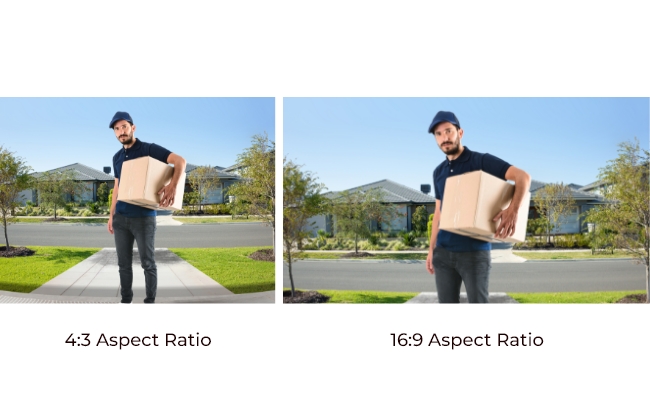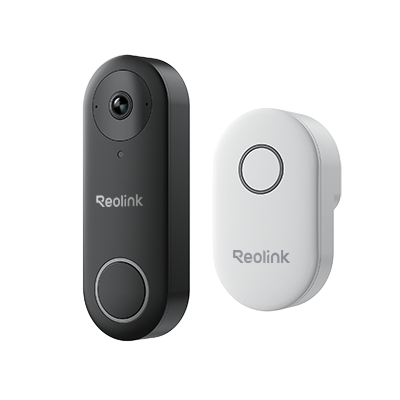4:3 vs 16:9 Aspect Ratio: Which is Better?

Choosing the right aspect ratio is as important as choosing the right camera or device. It gives you the display size you need and helps you enjoy the experience. However, not everyone is familiar with what different aspect ratios technically mean.
In this article, we will discuss 4:3 vs 16:9 aspect ratios. We will compare both and help you understand what these are. We will explain which aspect ratio is perfect for the common applications to help you select the right one.
4:3 vs 16:9: Basic of Them
What is 4:3 Aspect Ratio?
The 4:3 aspect ratio means for every 4 units of width, there will be 3 units of height. That said, the width is more than the height, but the difference is minimal, which is the reason it looks almost like a square. Some examples are 2048 x 1536, 1920 x 1440, and 1600 x 1200.
We have been enjoying displays of 4:3 aspect ratio since the early days because it is the standard display of the monitors and TVs we used to have. It is a good option for portrait-oriented visuals where the focus is on both width and height.
What is 16:9 Aspect Ratio?
The 16:9 aspect ratio is a lot wider because, for every 16 units of width, there are 9 units of height. Thus, you see a notable difference. It looks like a landscape display perfect to cover large backgrounds. The examples are 3840 x 2160, 2560 x 1440, and 1920 x 1080.
It is a common aspect ratio these days. It was introduced as the HD TV standard but is now being used on YouTube, monitors, smartphones, and various devices and platforms. It offers an incredible cinematic experience.
4:3 vs 16:9: Which is Better?
Both 4:3 and 16:9 aspect ratios have distinct characteristics. One could be excellent for one application but may not be for others. Let’s see which is better in common applications.
Photography
4:3 is often used for portraits as it focuses more on the object rather than the background. It covers more information vertically due to better height.
16:9 is ideal for landscape photography. It has a wider field of view that captures the background and longer images. It is good for group photos, architectural photos, etc.
Video
Nowadays, 16:9 is the most commonly used and preferred video aspect ratio. It’s used on various platforms, including YouTube. People also prefer to see movies in the aspect ratio.
Print Photos
Both aspect ratios are used for printing. However, large and landscape images are printed in 16:9. They are good for group photos, landscape photography, etc.
4:3 is generally used for square prints, mostly when you have portrait images.
Monitor/TV
The monitors and TVs you will find these days have a 16:9 aspect ratio. It is preferred as the industry standard for HD video quality. A 4:3 aspect ratio in displays is getting rare.
Gaming
The standard aspect ratio for gaming is 16:9. It offers a wider view and is preferred for games like PUBG and Fortnite. However, the games in the early days were in 4:3 aspect ratio, and you might have played King of Fighter.
Filmmaking
The early filmmaking was more on the 4:3 aspect ratio because of the old monitors and TVs. But now, the industry standard is 16:9, as it offers an immersive experience and more details in one frame.
Troubleshooting: What Happens If You Use the Wrong Aspect Ratio?
If you choose the wrong aspect ratio, your experience of watching the video will be ruined. Let’s understand it with an example.
If the video is shot at 16:9 and viewed at 4:3, most of the information will be cut. 4:3 is not wide enough, so the frame will get shortened from the left and right. Secondly, you will see the black bars at the top and bottom as the height is higher in 4:3 compared to 16:9. If you try to fit the video in the 4:3 frame, the objects and other things will appear disproportionate.
Similarly, if you play a 4:3 video at 16:9, the information at the top and bottom will be lost. The frame will be cut due to the shorter height of 16:9. You will also see black bars on the left and right.
Bonus: 4:3 Aspect Ratio Video Doorbell Recommendation
A 4:3 aspect ratio is an ideal option for the doorbell. It offers an expansive vertical view and captures the visitors and every detail. Reolink Video Doorbell is a Wi-Fi smart doorbell that offers a 4:3 aspect ratio. It records in 2K+ (5MP) resolution for optimal clarity. You get to see the intricate details.
It can be connected to your Wi-Fi. It automatically detects objects and sends instant alerts to your devices. You can see the remote view from any location without any subscription. It also offers night vision to capture clear videos at night. Other than that, it has dual audio, flexible storage options, a water-resistant design, and a lot more.
Smart 5MP Video Doorbell with Chime
5MP Super HD Day & Night, Person Detection, 2.4/5 GHz Dual-Band WiFi, 180° Diagonal Viewing Angle, Two-Way Audio, Rich Notification.
FAQs
1. Is Instagram 16:9 or 4:3?
Instagram is neither 4:3 nor 16:9. In fact, portrait images and videos have an aspect ratio of 4:5. For stories and reels, the ratio should be 9:16. If you want square images and videos, you can go with 1:1 as well.
2. Which is better for a projector screen, 4:3 or 16:9?
You should go with 16:9. It is the common industry standard for videos, movies, presentation slides, etc. It has a wider field of view to offer more information in one frame. Moreover, the projector background is usually 16:9.
3. What is the best crop ratio for photos?
It depends on the application. There is not a single aspect ratio for all purposes. Some commonly used aspect ratios for cropped photos are 1:1, 3:2, 4:3, and 16:9.
Conclusion
4:3 and 16:9 are common aspect ratios, but they offer distinct features. For a better viewing experience, you must pick the right aspect ratio. We have explained what these aspect ratios are and their common use cases. It will help you select the best ratio for your needs.
Search
Be in the Know
Security insights & offers right into your inbox

